Day One
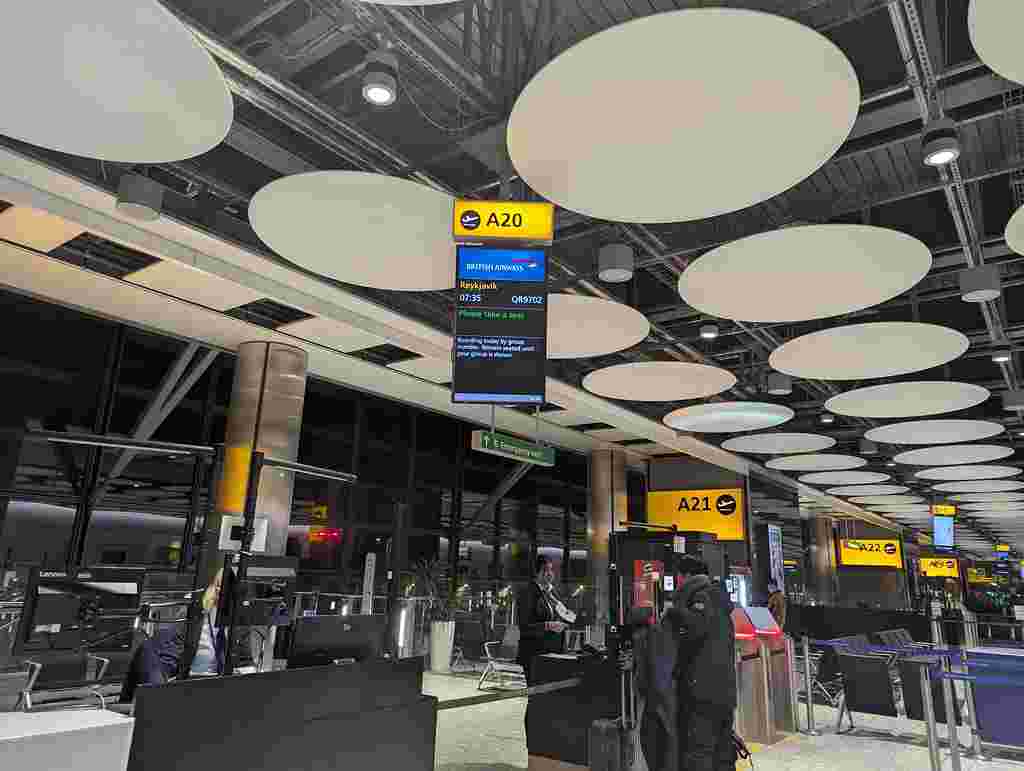
We had booked an early morning BA flight from London Heathrow over to Reykjavik taking just under three hours. With Iceland being in the same time zone as the U.K. it was still only 10.30 a.m. when we touched down into a snowy Keflavik airport.
Getting into Reykjavik from the airport
The airport seemed very efficient and it only took around 15 minutes to pass through immigration and to collect our bags from the luggage carousel.

We then went in search of the Avis/Budget car hire desk from where we collected the keys for a Hyundai i20 which was parked outdoors. The car was iced up and covered in snow so it took us quite awhile to scrape it before we could set off. On city breaks we usually rely on public transport to get around but as Reykjavik is quite small and easy to navigate we opted for a hire car. Keflavik airport is located 48 km’s out of the capital with a journey time of approximately 50 minutes. Our car came equipped with studded tyres and a satnav screen enabling us to drive safely in the icy conditions.
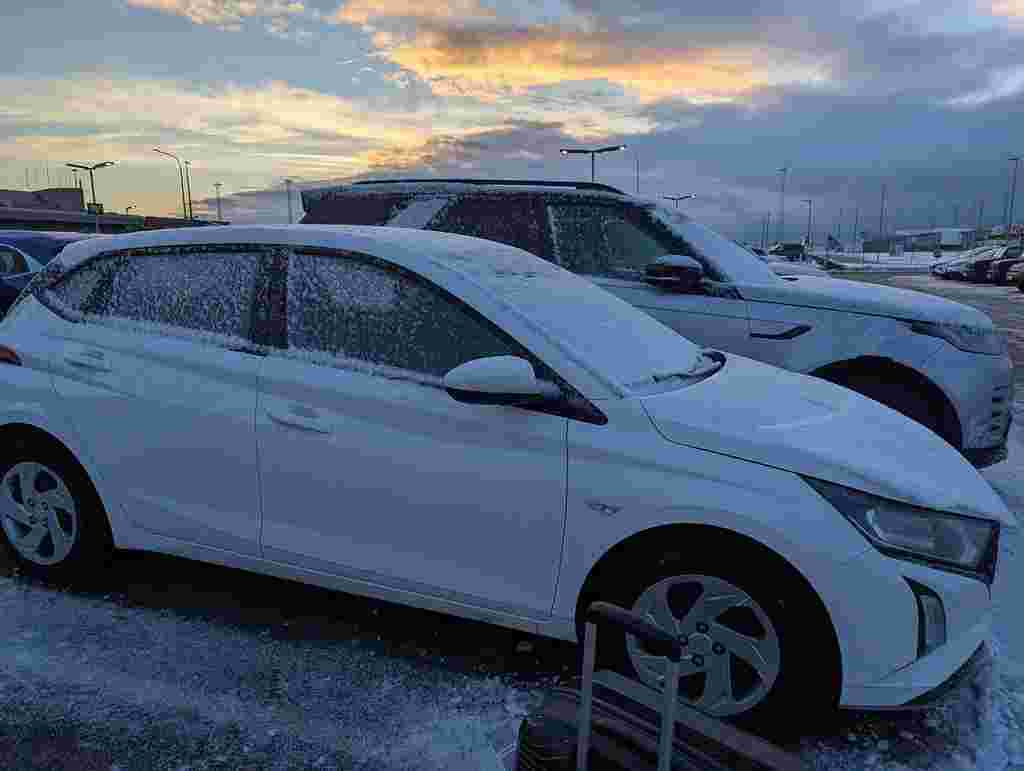
If you prefer to use public transport then this can be arranged with Flybus who operate regular services between the airport and the Reykjavik bus terminal. Transfers are quite expensive at almost £25 per person each way so if you are prepared to drive I believe that it could offer better value. We only paid £130 for three day car hire which was then useful to get around the city without wasting time waiting for buses.
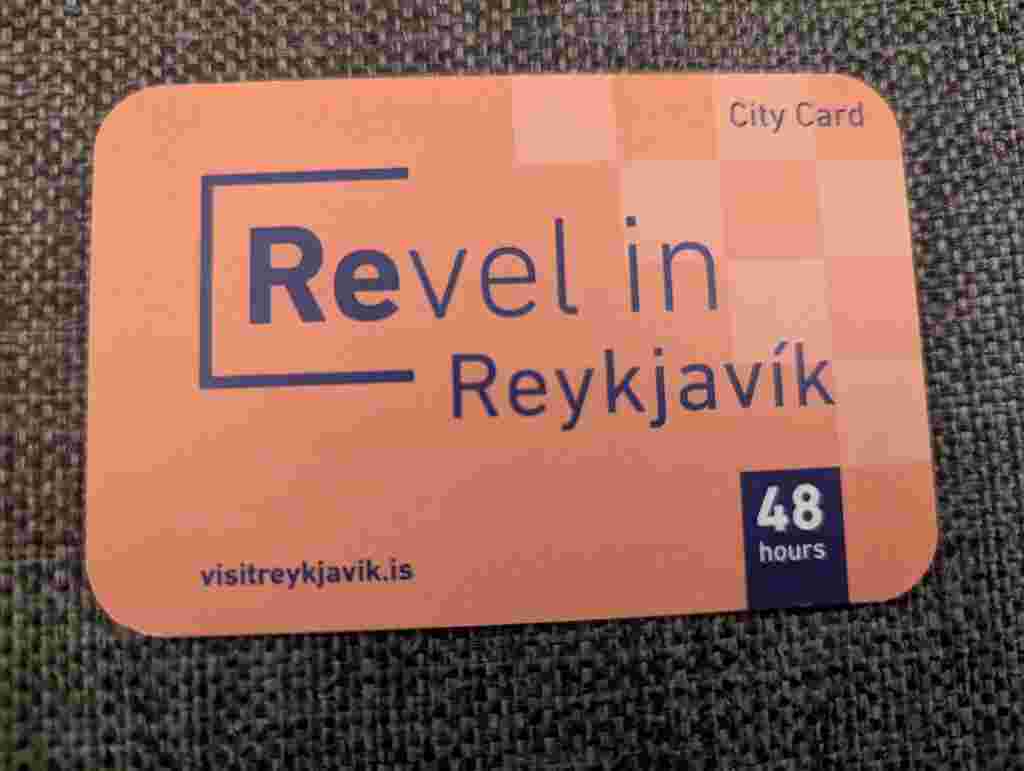
The Reykjavik City Card is also a good option as it offers free entry to a large selection of museums and galleries and free unlimited travel by bus within the Reykjavik Capital Area. Please be aware that the card does not include Bus 55 to the airport as that leaves the city. In addition, the card also gives discounts on various tours, in shops, and on services. Cards can be purchased in lengths of 24, 48 and 72 hours with the 48 hour card being priced at ISK Kr 7,700 (£44.20).
Stay
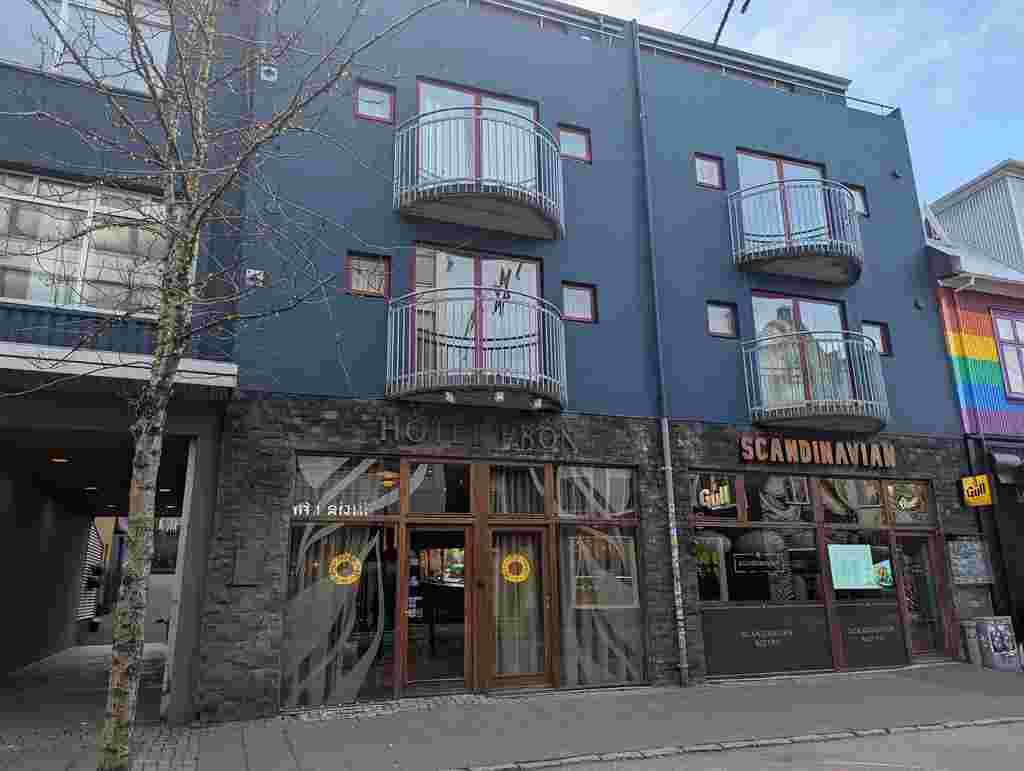
We chose to stay at Hotel Fron located on one of the main streets in the heart of Reykjavik. The hotel has a small car park to the rear (additional cost) but we had no trouble finding unrestricted parking places nearby during our stay. We had booked a superior studio but were pleasantly surprised to have been upgraded to a one bedroom apartment.
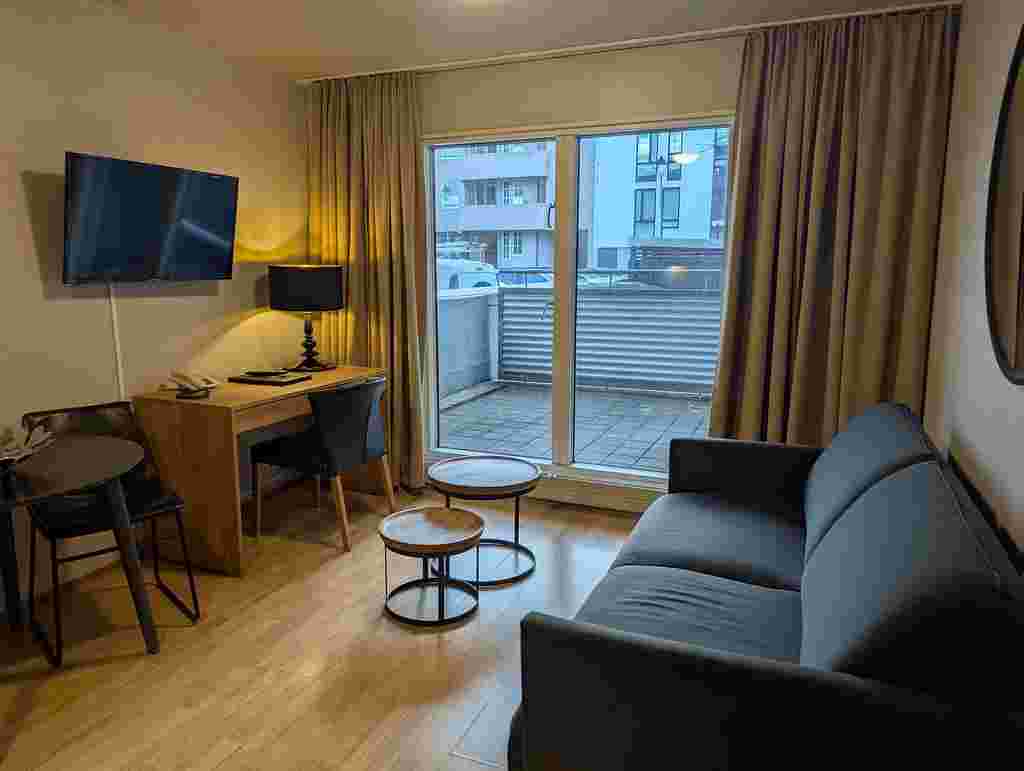
This was attractively furnished with a full kitchen at one end of the living room. As breakfast was included in our room rate and we planned to eat out to sample the local restaurants, we only used the kitchen to make ourselves hot drinks but if you prefer self-catering to keep costs down, then both the studios and apartments at Hotel Fron are good options.
City Centre Sightseeing
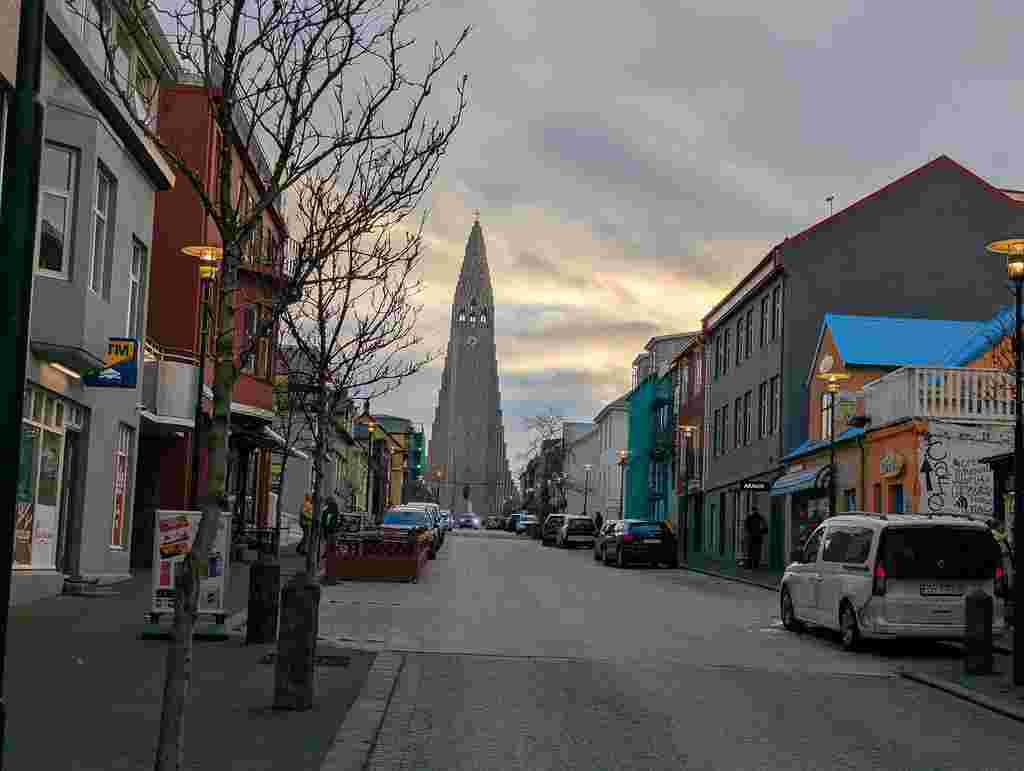
We started off with a stroll along the city’s main shopping streets which are lined with many attractive buildings serving as shops, restaurants and bars. Interesting shops included those offering Icelandic knitwear, outdoor apparel and souvenirs.
Hallgrímskirkja Church

Situated at the top of a hill a few minutes walk from the shopping streets stands Hallgrímskirkja Church which is one of Reykjavik’s best known landmarks as it is visible from all across the city. The church is unique due to its striking modernist architecture, inspired by the natural rock formations of Iceland. Its most distinctive feature is its towering spire, which stands at 73 m, making it one of the tallest buildings in Reykjavík. The church is named after Hallgrímur Pétursson, one of Iceland’s most famous poets who was a Lutheran minister known for his hymns and religious poetry.
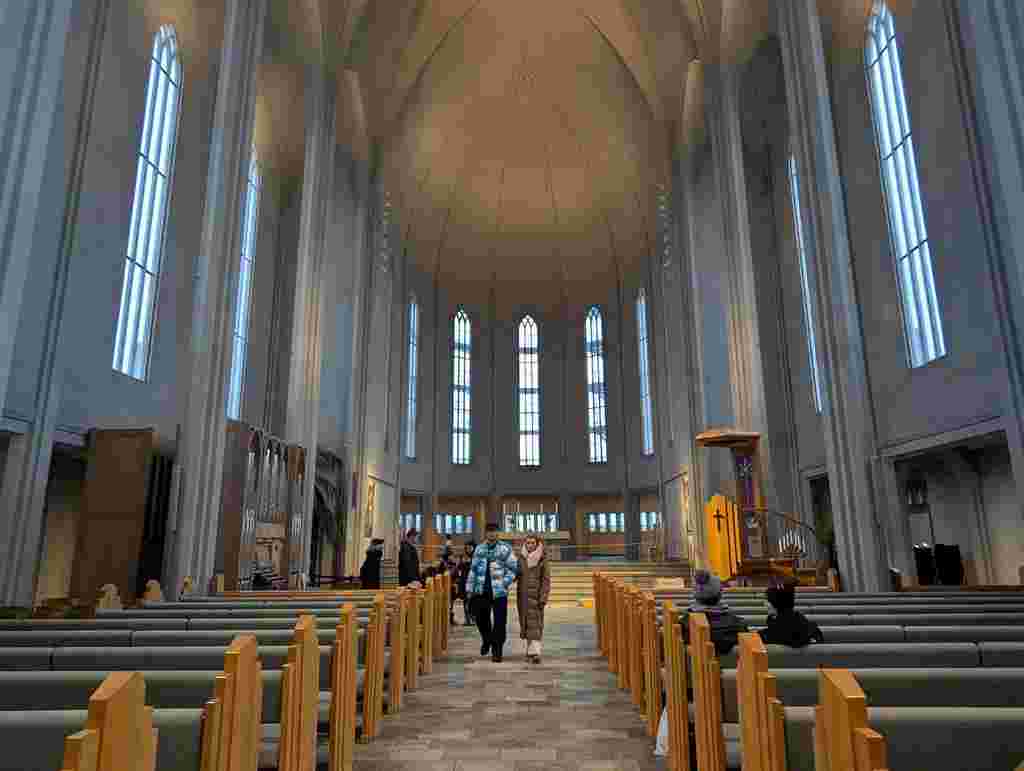
Before entering the church we paused to admire the statue in front of the church which is of Leif Erikson, a Norse explorer who is believed to have been one of the first Europeans to set foot in North America nearly 500 years before Christopher Columbus.

Entrance to the church is free of charge with an ISK 1,000 (£5.79) fee payable to take the lift to ascend the tower. The internal design takes inspiration from the basalt columns found at Southern Iceland’s Black Beach and Svartifoss Waterfall. The vast interior features an impressive organ and altar. The church pews are an unusual feature as the seats can be rotated to face either the front or rear in the same way as on a tram.
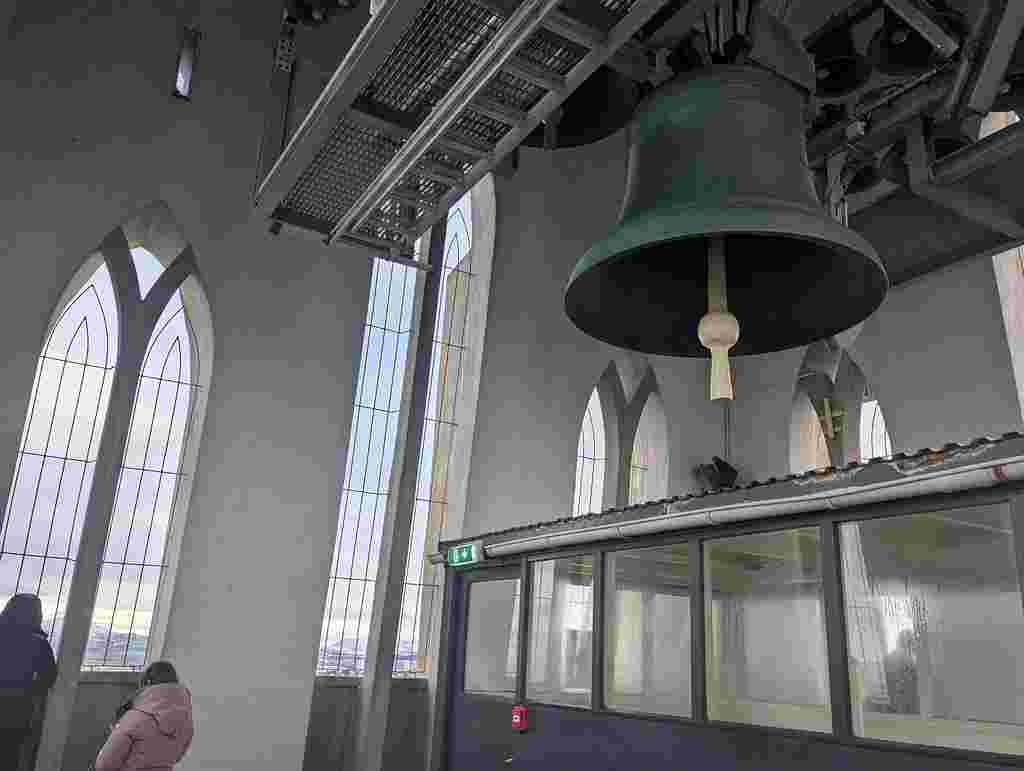
I recommend purchasing a ticket to ascend the church tower as the views from its observation deck are some of the best in the city. After taking the lift it’s then necessary to walk up one flight of steps to reach the lookout point so do bear this in mind if you have mobility problems.
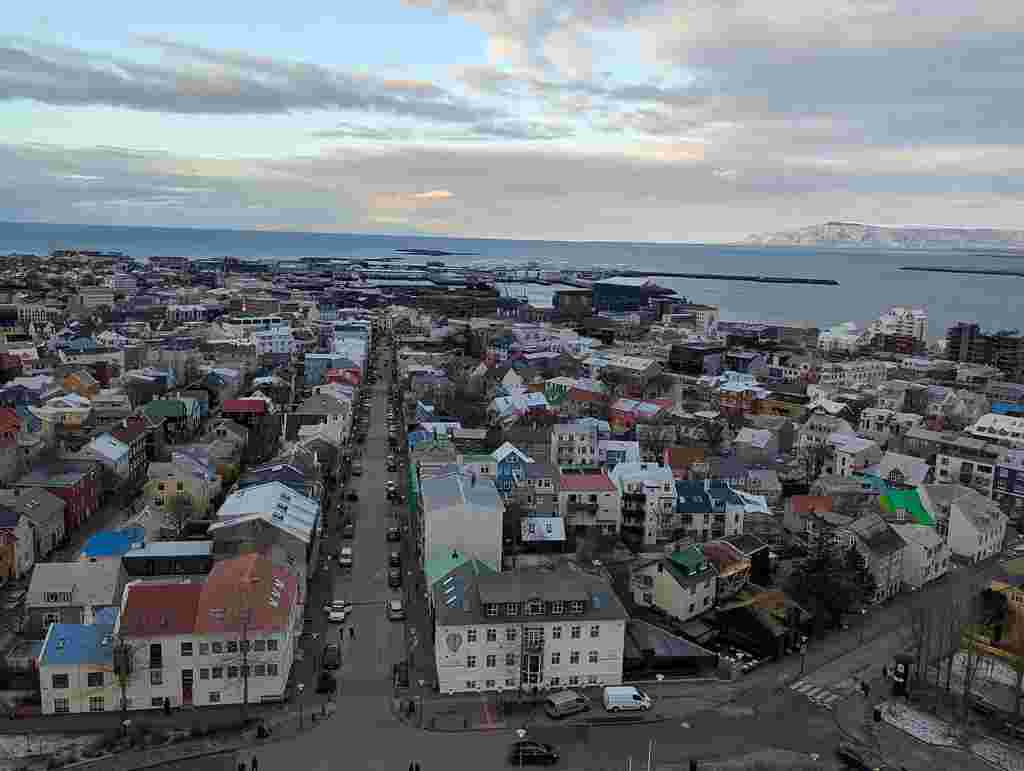
Wooden boxes are positioned beneath the tower’s windows which was especially helpful for small people like myself to enjoy the views and take photos. Hallgrimskirkja
Rainbow Street
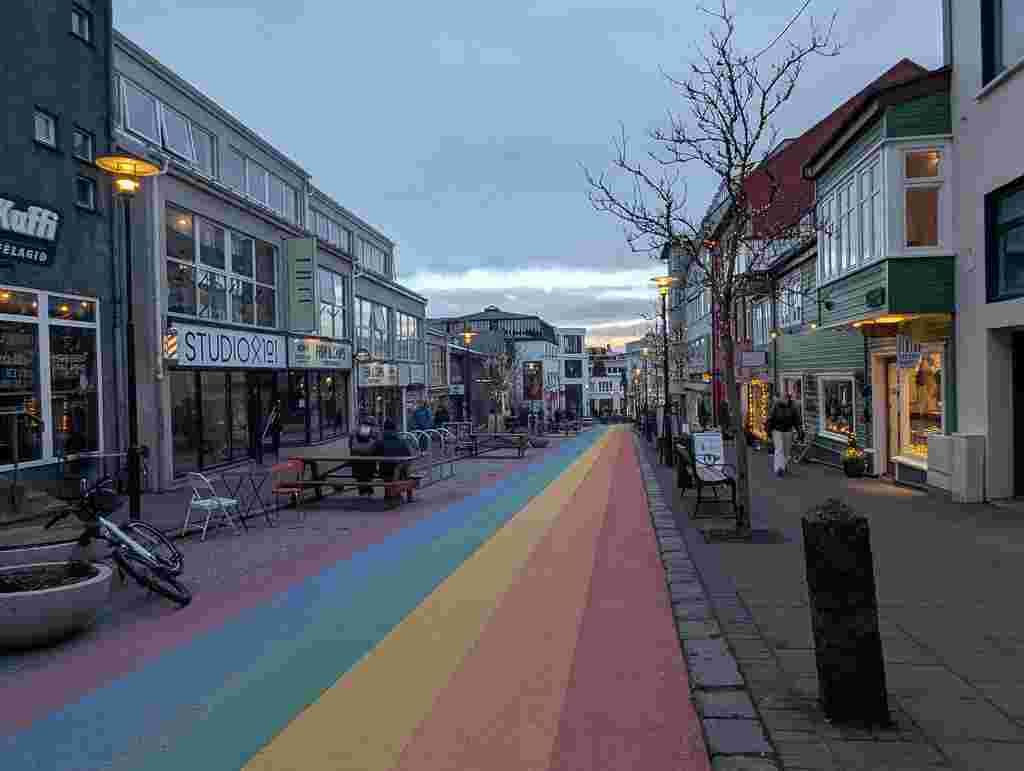
We then strolled down Rainbow Street which runs from the church down to the main shopping street, Laugavegur. Its actual name is Skólavörðustígur and is known for its charming and picturesque buildings which are painted in a wide range of bright colours and home to a variety of shops, cafes, restaurants, and galleries.
Harpa Concert Hall
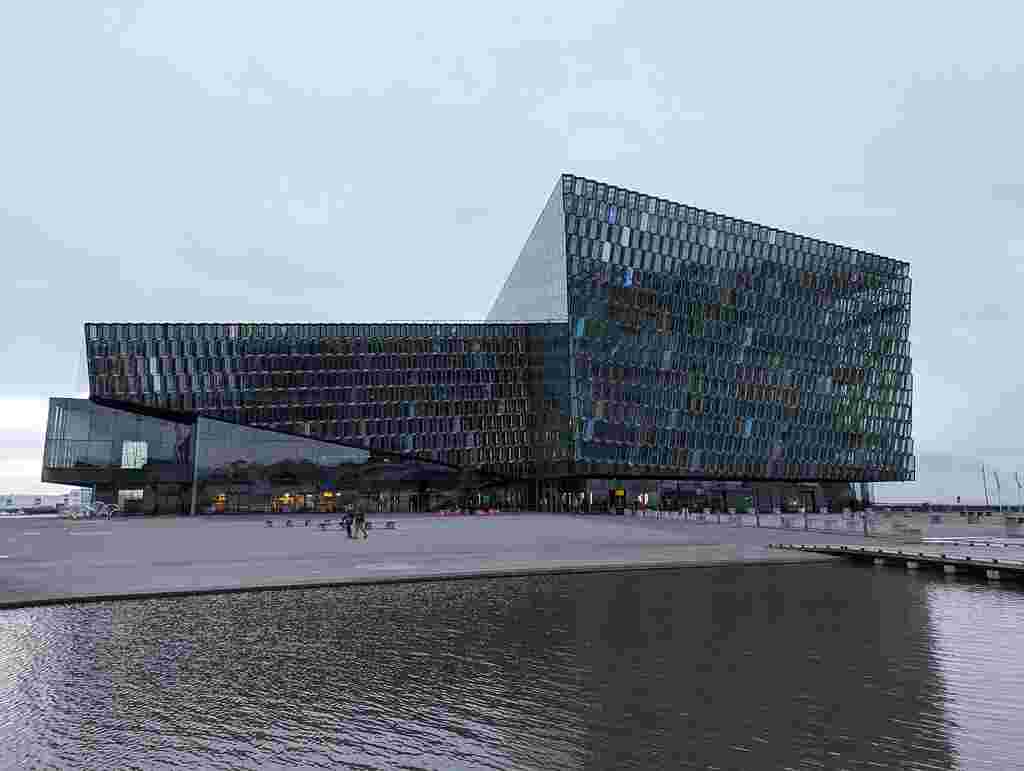
Since the Harpa Concert Hall and Conference Centre opened in May 2011 it has been acclaimed as one of Iceland’s most important contemporary buildings. The Concert Hall and Conference Centre is situated on the sea front with a clear view of the sea and the mountains surrounding Reykjavik.

Its striking geometrical facade captures and reflects the light beautifully creating a link between the building, the city and the natural scenery. At night, the facades are illuminated by LED lights with the colour and light intensity adjusted to create a series of patterns and letters. The theatre is home to both the Icelandic Symphony Orchestra and the Icelandic Opera and if time allows, an evening performance at the concert hall would be an absolute delight. Harpa Concert Hall
The Settlement Exhibition
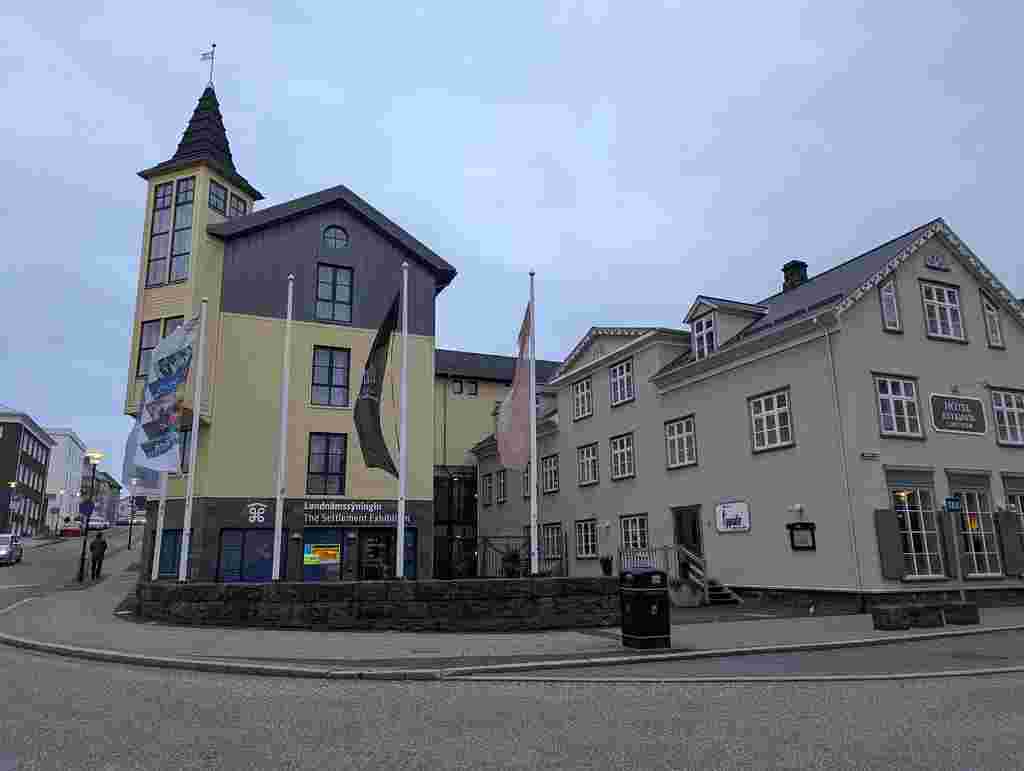
This fascinating archaeological museum is based around a 10th century Viking longhouse unearthed there between 2001 to 2002. Settlers inhabited the longhouse from 930-1000, making it one of the oldest man-made structures found in Iceland.
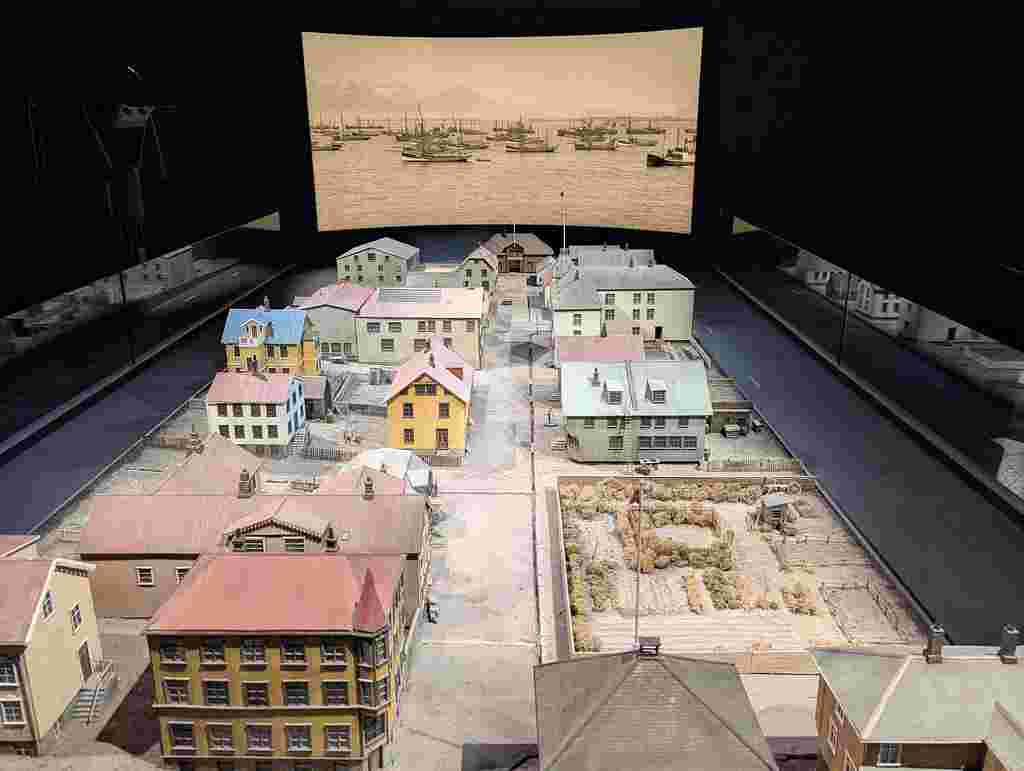

Interactive touch screens provide information about the Vikings’ expansion and about how they settled in new countries. A fragment of a boundary wall at the rear of the museum is the oldest man-made structure surviving in Reykjavik. Other highlights include a captivating wraparound panorama demonstrating how the city would have appeared at the time of the longhouse. The Settlement Exhibition
Saga Museum
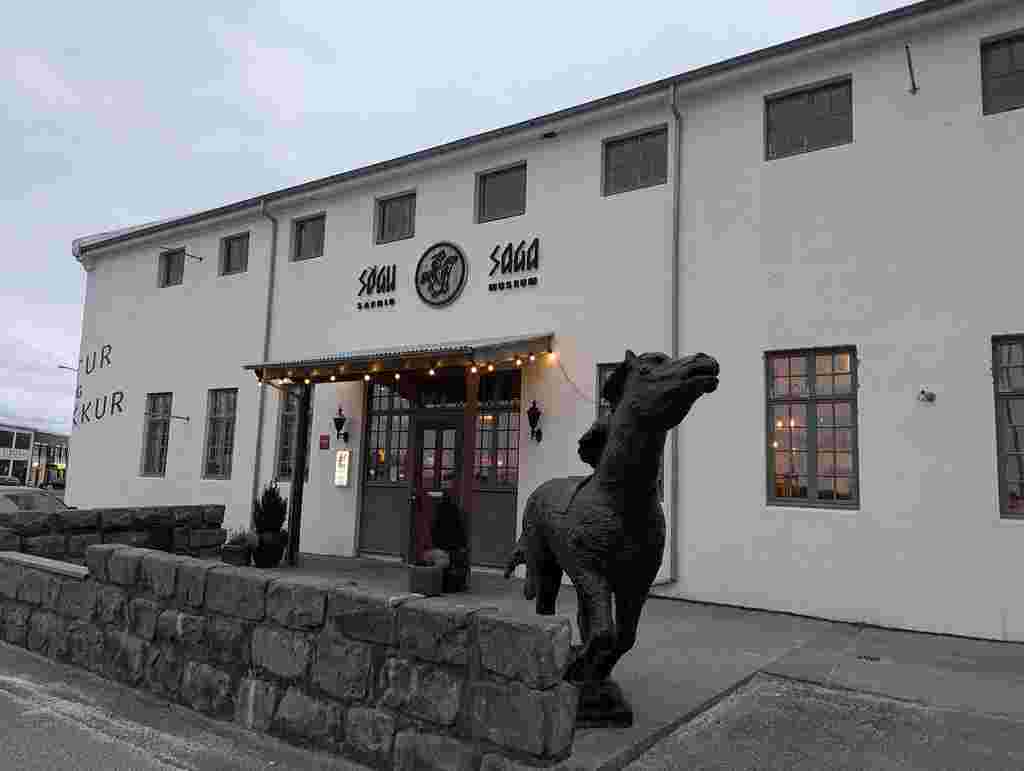
The Saga Museum, or “Sögusafnið” in Icelandic, is located in the Grandi district and is a museum that brings to life the early history of Iceland with detailed wax figures, dynamic scenes, and information about the many historical figures on display.

The Saga Museum is dedicated to historical people and events as they have been described in the Icelandic Sagas. These epic tales were written in the 12th to 14th centuries but describe events from the late 9th to early 11th centuries that were preserved through oral tradition.

We were handed audio guides which described each display in sequence. The story begins with the creation of Iceland, the settlement, the foundation of the Alþingi parliament at Thingvellir National Park, the biggest battle in Iceland’s history at Orlygsstadir, the effects of the Black Death, and much more. It takes approximately 30 minutes to tour the museum listening to each of the narratives and with realistic sets that have much attention to detail I felt that it would be of interest for all ages. Saga Museum
Reykjavik Maritime Museum

Close to the Saga Museum lies the Reykjavík Maritime Museum where we explored its permanent exhibition entitled Fish and Folk – 150 years of fisheries. The museum is located by the harbour side in a building that previously housed the Reykjavík Municipal Fishing Company. This place holds countless stories of the people and the sea, now celebrated in the museum’s exhibitions.
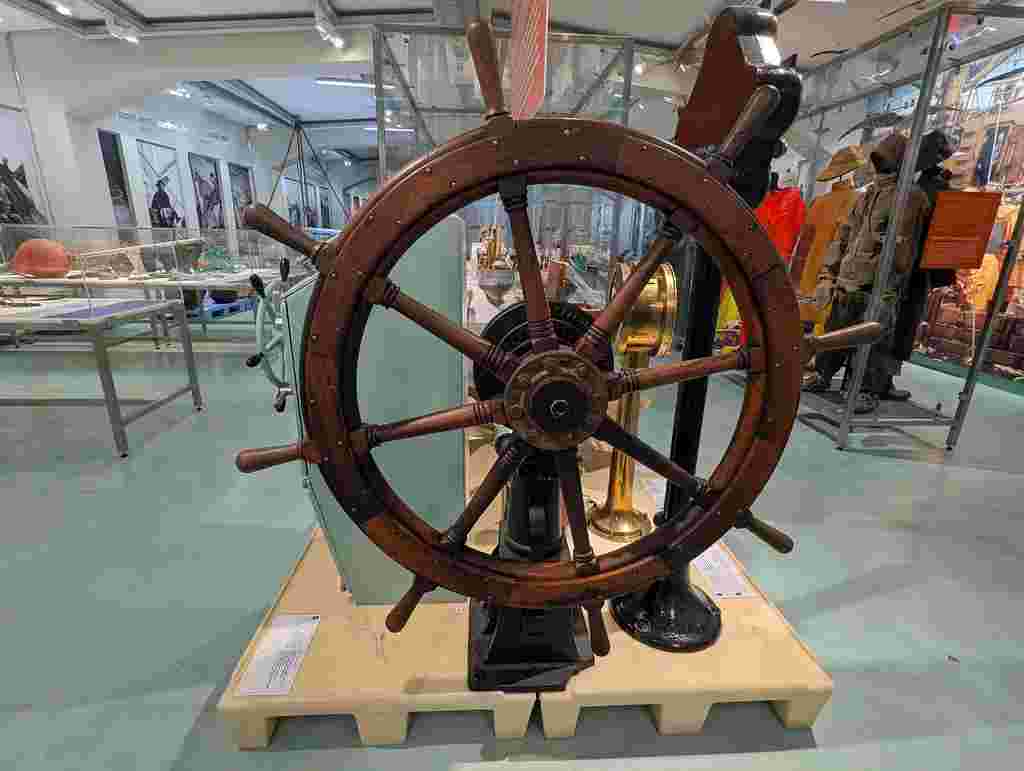
The stories explore this mainstay of the nation’s working life and ways of working in the past and present and how the Icelanders’ coexistence with the sea has shaped their history.
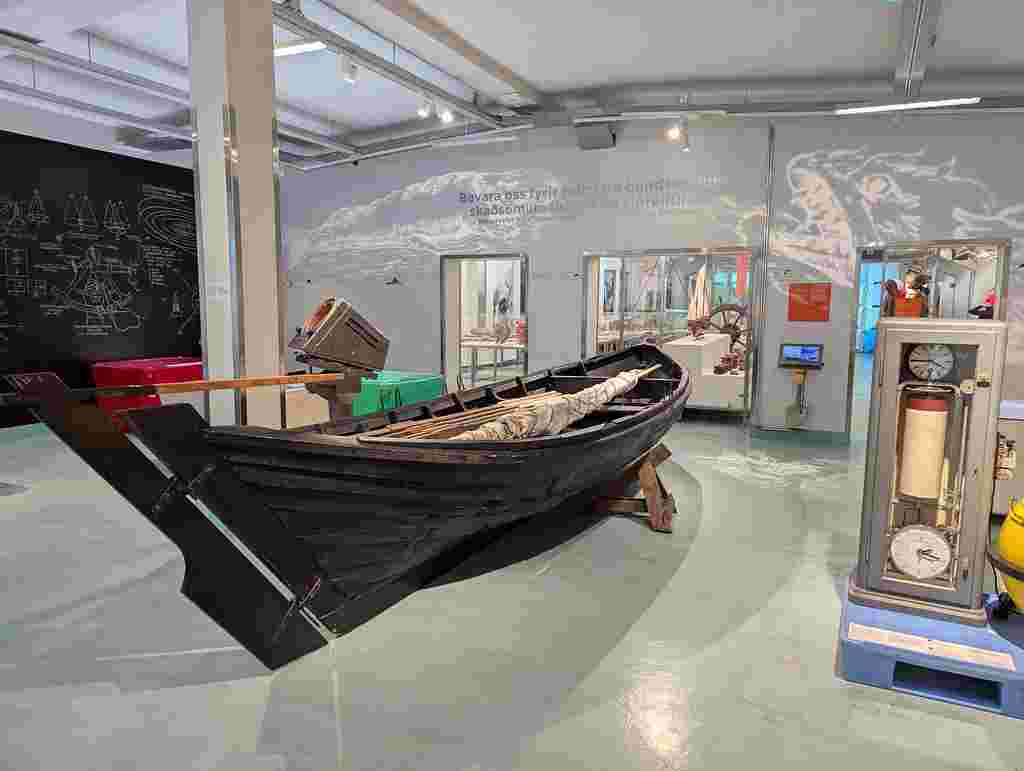
Also addressed are pressing issues of modern times, such as the sustainability of fishing and environmental aspects of the sea. Reykjavik Maritime Museum
Reykjavik Photography Museum
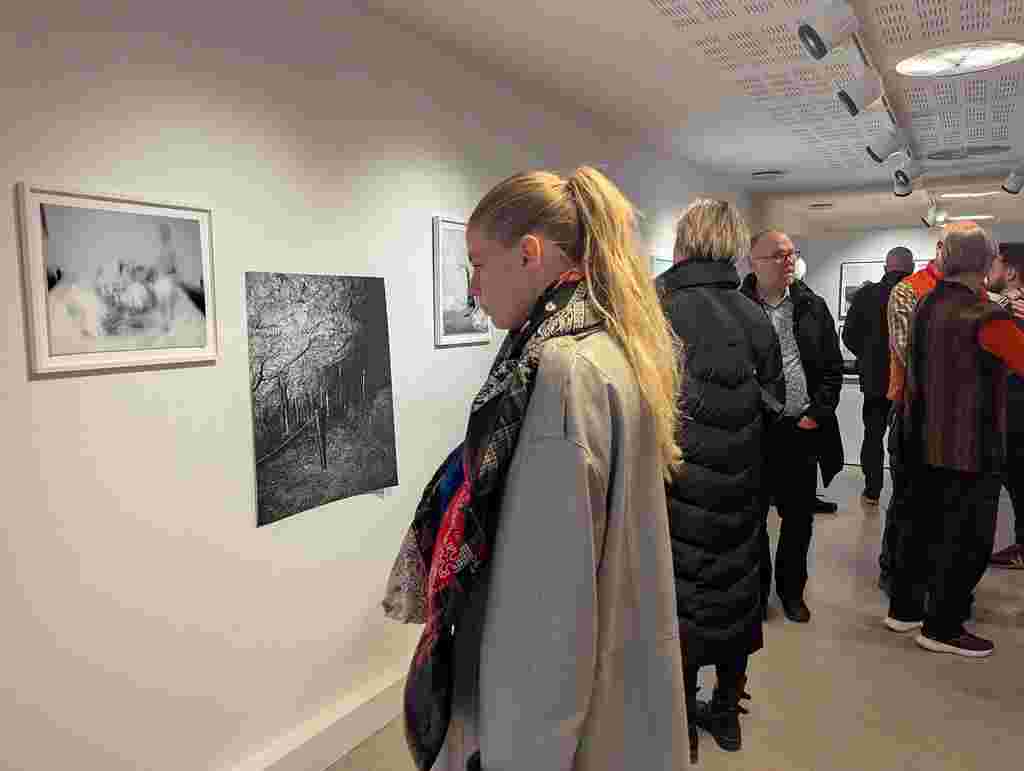
Reykjavík’s photography museum is located on the upper floor of the central library. It offers an ongoing programme of contemporary and historical exhibitions, and an onscreen archive of thousands of images from the past. The museum stays open until 6.00 p.m. and on the day of our visit a new temporary photography exhibition entitled ‘Weathered’ was due to begin and we were kindly invited to attend its preview from 5.00 p.m. The exhibition featured works by sixteen members of the Icelandic Association of Contemporary Photographers: with impressive pieces in both black and white and colour formats. Reykjavik Photography Museum
Dinner at Jomfruin

After a short rest back at our hotel we headed out to dinner at Jómfrúin, located in the city centre quite close to Harpa Concert Hall. We selected this restaurant as it’s an Icelandic institution, popular with both locals and tourists alike as it combines the freshest Icelandic ingredients with Danish heritage. You might think it strange to choose to dine on a cold winter’s evening in a restaurant specialising in smorgasbord (open sandwiches) but as well as tasting delicious, they are artworks on a plate.
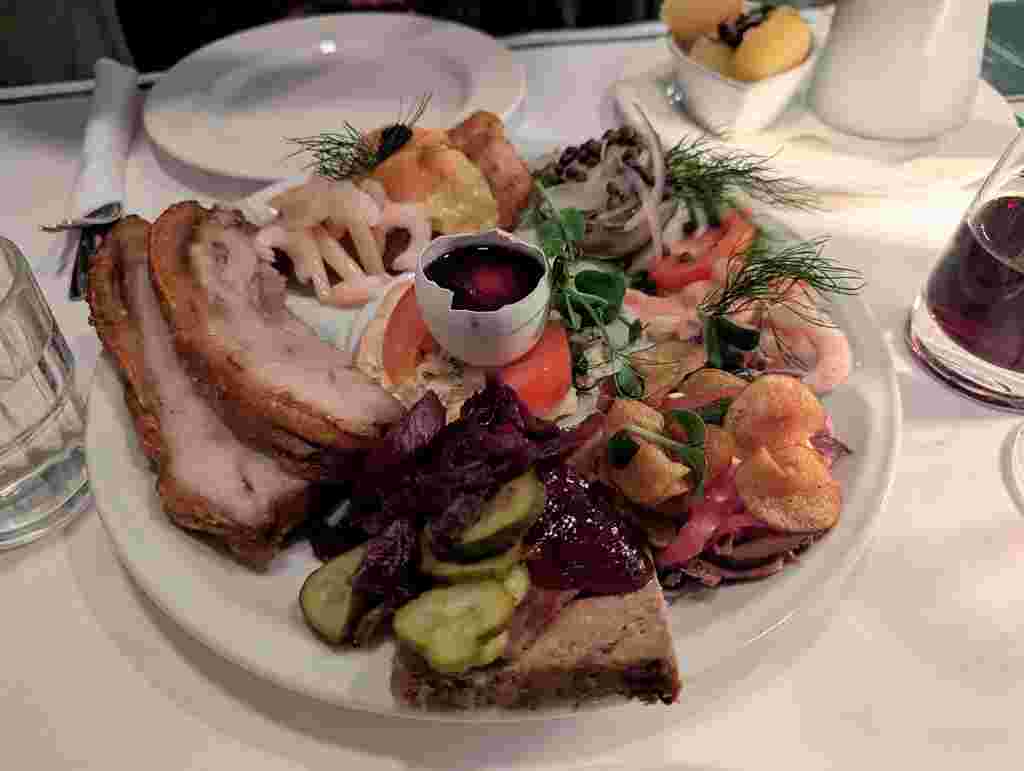
The menu also includes a range of hot dishes and platters and as we were spoilt for choice we decided to opt for one of their luxury platters which comprised prawns, herring, flounder, roast beef, pork belly and Icelandic blue cheese. The platter was accompanied by a bowl of tasty new potatoes, dark rye bread and a jug of red wine jus. Neither of us could resist a dessert and our choices of meringue and chocolate gateau were the perfect end to our meal and our first day in beautiful Reykjavik. Jomfruin
If you have enjoyed this post you may also like:
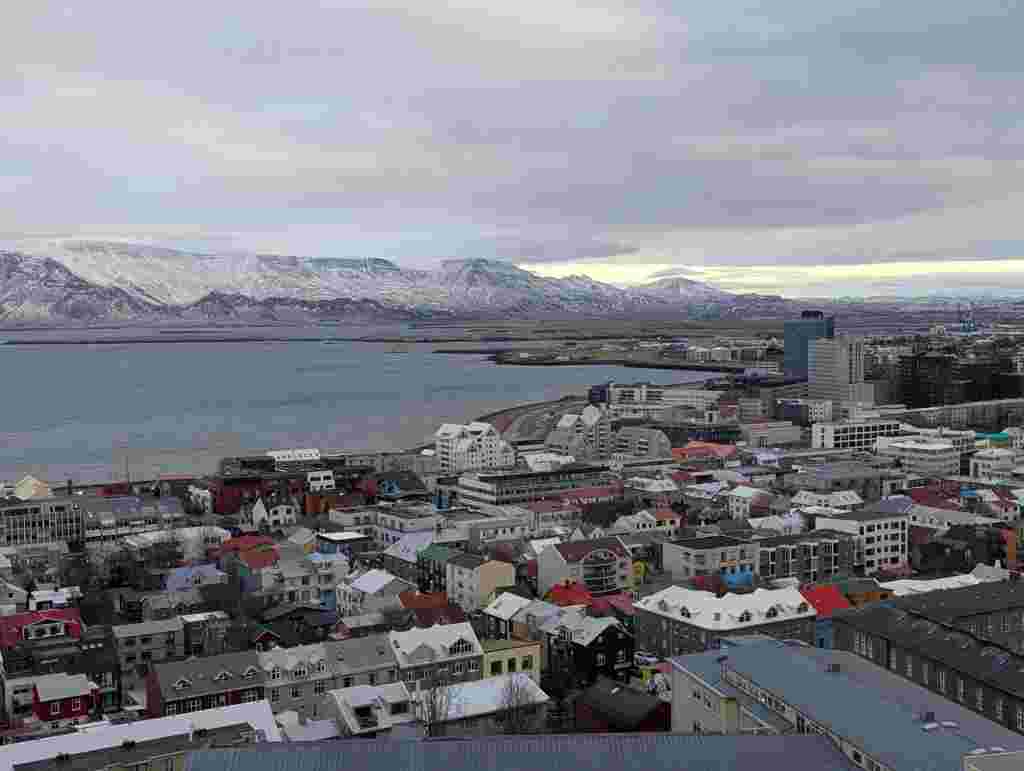

Leave a comment